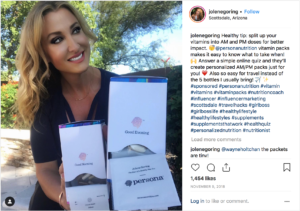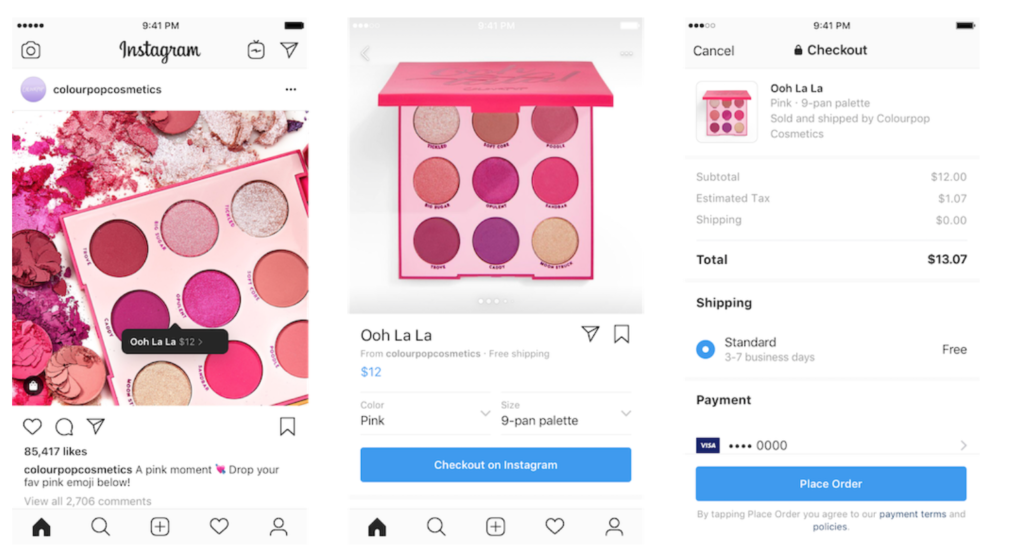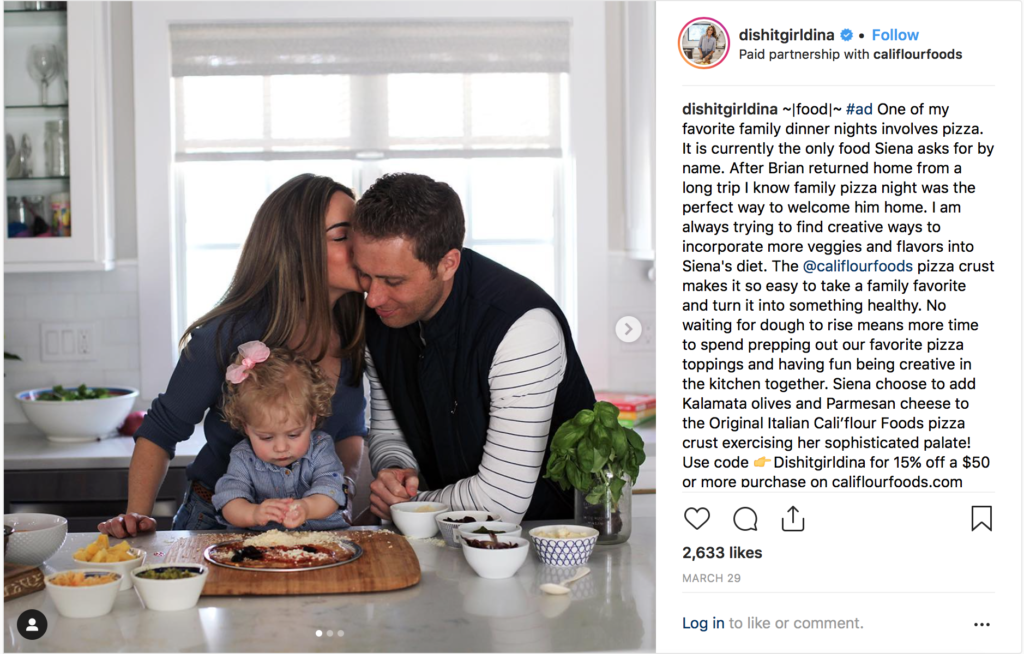If you’re running an omnichannel marketing approach that doesn’t include online influencers, are you even marketing, bro?
Omnichannel marketing is a major buzzword in the industry right now. All the cool kids are doing it, and in today’s digital world, you should be, too. But, in case you slept through your English teacher’s lecture on Latin root words, omni means all-inclusive, all-surrounding, complete.
Okay, don’t zone out on us, we’ll bring it back around.
How does this relate to marketing?
In omnichannel marketing, the “omni” part translates to reaching consumers at all possible touchpoints with a single, cohesive brand strategy. Which means, your social media posts, email outreach, in-store experience, et cetera, should all interconnect, share the same messaging, and drive the same goals-ultimately leading the consumer from discovery to purchase (and beyond) with ease. So, when you think about it, why would you leave influencer marketing (the fastest growing channel for customer acquisition) out of your plan?
(#rude)
If you, like so many other CMOs and marketing professionals haven’t had the bandwidth to integrate influencer marketing into your omnichannel strategy, or (gasp) you haven’t quite gotten around to building out an omnichannel strategy at all, we’ve got your back. To get the real insight, give us a call, but, in the meantime, here are a few thoughts to get your wheels turning.
First thing’s first, what would an omnichannel strategy even look like?
Well, here’s a list of (most) of your digital options:
Instastories
Instagram Live
Instagram Boosted (Main Feed OR Stories)
Instagram Ads (Main Feed OR Stories)
IGTV
YouTube
Facebook Stories
Facebook Live
TikTok
Snapchat
Twitch
Blog
App
Newsletter
Website
Google Ads
… you get the picture.
Let’s be clear: you do not need to use every single channel on this list to employ a successful omnichannel marketing strategy. Actually, depending on your brand, you may not want to have a presence on every single platform! No matter what your definition of “omni” is, make sure you remember:
- Everything you share on every channel should ladder back to your brand’s core beliefs, mission, and point of view.
- You may say things differently to relate to the different audiences on each channel, but you should ultimately always be saying the same thing.
Think about it this way: If your brand was a person, she’d talk differently in the board room than she would over brunch, and differently to colleagues in the office than family over dinner. But, no matter where she was, or who she was talking to, she always looks, sounds, and thinks like herself. Put bluntly? Be clear, honest, transparent, and authentic and you’ll be fine.
Social media influencers aren’t on your payroll, they don’t dial into weekly conference calls or pass you in the office hallway, so it can be easy to dismiss them as a separate, unrelated leg of your marketing team. However, their power in the industry is undeniable and cannot be overlooked. According to Collective Bias*, 49% of consumers claim they depend on social influencer recommendations to inform their purchasing decisions. With stats like that, how can this not be at the core of your marketing strategy?
At LMS, our online influencer content out performs its advertising equivalent by 75%. Insane, right!? Take our work with @jolenegoring for Persona Nutrition as an example. Her branded, boosted Instagram post resulted in consumer purchases at a 79% decrease of Persona’s average customer acquisition cost through their own advertising. This proves, that if done well, social media influencer marketing will lead the charge in omnichannel marketing. Thus, instead of ideas and plans trickling down to your online influencers, they should be part of the initial discussion. Their platforms, their talents, and their fully engaged audiences need to be strategically integrated into your omnichannel marketing efforts.

So, what exactly does integrating online influencers into an omnichannel strategy look like?
Let’s break it down.
Omnichannel marketing is all about streamlining the consumer experience. In fact, 73% of consumers use multiple channels along their journey from discovery to purchase, and you can bet your bottom line that one of those channels is a social media platform. Omnichannel management largely relies on tracking the customer journey. Which means, companies can follow a consumer from visiting their website, to clicking an ad on social media, to entering a giveaway resulting in email acquisition, to a promo code use at your brick and mortar…and on and on and on. Each of those touchpoints has a digital footprint, a trackable trail left by the consumer and useable by the company to serve their next tier of relatable marketing. Pretty great, right?
With all of these direct lines and intentional consumer paths, it can be hard to understand how the less traceable effects of social media influencer marketing fit in. But never fear, LMS dove into these uncharted waters, waded through the emojis and hashtags, and drew up a map of exactly how to integrate influencers into omnichannel marketing.
5 easy ways to integrate influencer programing into omnichannel marketing:
1. Call LMS
#Jokes. For real, though, this stuff is our jam! But if you still wanna be all DIY or whatevs, see below.
1. Track the Untrackable
We’re about to go Sherlock Holmes on some influencer tracking!
- Promo Codes – These little guys are great. They directly show you an influencer’s effectiveness and let you calculate a tangible ROI, give you insights into what platforms/types of posts are reaching your customers, and tell you in what products an audience is most interested. Last but not least, they drive traffic to your site giving you the opportunity to directly acquire customer information for further omnichannel marketing integration.
- Affiliates – Step up your promo code game by identifying influencer affiliates who will consistently share codes and links to your products in exchange for commission. Keep it fresh by strategically feeding them new messaging and products that coincide with your omnichannel funnel.
- Swipe Up – You gotta love that a tiny flick of a finger can take consumers directly from an activation to your website. Encourage influencers to utilize the “swipe up” feature in Instagram Stories and link directly to their favorite product, your newsletter sign-up, a coupon, an educational video..whatever suits your swipe! *note this feature is only available to verified Instagram accounts with 10k+ followers.
2. Use What You’ve Got
Read between the lines. Context clues. Where there’s a will there’s a way!
You know the drill…
Say an influencer shares your product via Instastory. You won’t know exactly who is seeing this influencer’s post, or be able to get into specifics, information but don’t freak out yet. You still have some valuable control and knowledge that can result in customer acquisition. Here’s what we know:
- Where the activation will live (Instagram)
- When the activation will go up and how long it will last (24 hrs for a story)
- Who is posting (multiple influencers at once is ideal)
Using these facts, you can give consumers the ole one-two punch of product promotion by (in this example) strategically running Instagram ads promoting the same product at the same time the activations are live. Customize this strategy to fit any platform and any activation type.
Want to take it one step further?
Share the Influencer’s story in your stories, and make sure to give them a big shout-out for sharing the love.
Really want to rack up bonus points? Reach out to that kick-ass content creator and see if they’ll let you boost their content so you can run it as an in-story ad!
via GIPHY
3. Connect IRL
Believe it or not, influencers are real people!
They can walk and talk and even, say, host events at your brick and mortar store. One sure fire way to turn an influencer’s reach into customers physically interacting with your product, is to invite them to do so..IRL (in real life, for those of you behind the acronym times). An event, whether at your store or another location, provides the opportunity to collect information through RSVPs, in-event activations like giveaways, follow up emails and on and on. Plus, you get the added bonus of their followers testing, buying and falling in love with your product right then and there.
4. Quick Click Customer
No brick and mortar? No problem. Influencers can now take their followers straight to check out through many apps’ shopping abilities. Instagram, Pinterest, and newer apps like Dote, are opening doors (and consumer wallets) in the visual, mobile shopping world. Instagram now allows for purchases to be made in the app for a select initial group of retailers, and plan to open this feature to more brands soon. Fold this into your omnichannel approach and plan to have influencers share your shoppable posts, leading consumers directly to your digital checkout with a quick tap.

Pinterest has released a new “Catalogs” feature, where brands can upload their full catalog as shoppable product pins. Integrate social media influencers with this new feature by having them share their favorites from your catalog, directing their followers straight to your full inventory and checkout.
Social shopping app, Dote, offers the ability to host a sponsored shopping party led by influencers and stocked by retailers. Brands like Urban Outfitters are taking advantage of this new feature which allows influencers, aka “Dote Creators”, to host digital ‘parties’ with followers while browsing retailer offerings. This format gives retailers insight into a new audience, real-time feedback and a variety of opportunities to engage through the influencer, including in-app giveaways and polls.
5. Content is KING
All hail UGC (User Generated Content).
51% of consumers said that seeing UGC would increase their chances of buying products through a brand’s social media. It turns out, audiences trust the imagery of other consumers 7x more than advertising, and guess what? Influencers are viewed as ‘other consumers’. UGC isn’t perfectly lit and styled. It tends to be more natural and authentic, giving the vibe that the creator is actually using the product in real life. These posts don’t carry the stigma of paid endorsements like many celebrity advertisements. Instead, their content, even when called out as an #ad or #sponsored, carries an inherent trust that other forms of advertising just can’t seem to obtain. But who said influencer (and regular consumer!) content can only live on their feeds? Snatch that sh*t up, and put in your marketing toolbox. And by “snatch,” we obviously mean ask for permission, give credit, be a good person: snatching is not stealing, #kthanksbye.

As in-app technology and the “social” in social media continue to progress, the opportunities to do some serious collab work with influencers will only grow That means we’ll be expanding the meaning of omni in omnichannel marketing. #Protip: always keep your eyes and ears open and don’t be afraid to think outside the screen!
If your influencer game is a little lacking, let our masters in marketing take a swing at it – we’re really good at getting on the green. So, take a mo’ to visit www.wearelms.com and email imgame@wearelms.com to inquire about our services.